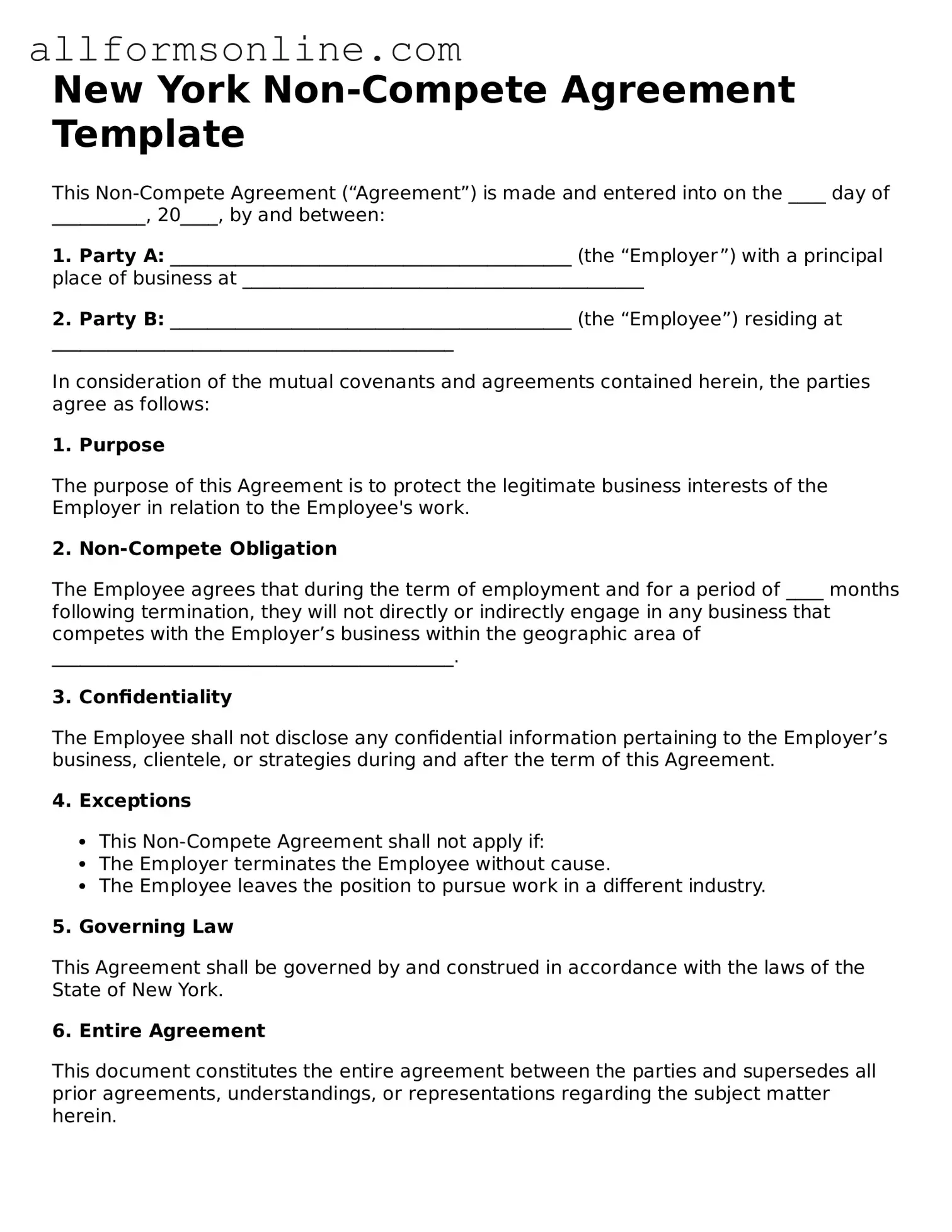What is a Non-compete Agreement in New York?
A Non-compete Agreement is a contract between an employer and employee. It restricts the employee from working for competitors or starting a similar business for a specified time after leaving the company. In New York, these agreements must be reasonable in scope, duration, and geographic area to be enforceable. Courts will review the agreement to ensure it protects legitimate business interests without unfairly restricting the employee's ability to earn a living.
Are Non-compete Agreements enforceable in New York?
Yes, Non-compete Agreements can be enforceable in New York, but they are subject to strict scrutiny. Courts will look at factors such as whether the agreement protects legitimate business interests, is reasonable in time and geographic scope, and does not impose an undue hardship on the employee. If an agreement is overly broad or vague, it may be deemed unenforceable.
How long can a Non-compete Agreement last in New York?
The duration of a Non-compete Agreement in New York varies, but it typically ranges from six months to two years. The specific length should be justifiable based on the nature of the business and the employee's role. An agreement that lasts too long may not be enforceable, as it could unfairly restrict the employee's future employment opportunities.
What should I consider before signing a Non-compete Agreement?
Before signing a Non-compete Agreement, consider the following: the duration and geographic scope of the restrictions, the specific activities you are restricted from engaging in, and how the agreement may affect your future job prospects. It’s also wise to consult with a legal professional to understand the implications fully and to negotiate terms that are fair and reasonable.
Can I negotiate the terms of a Non-compete Agreement?
Yes, you can negotiate the terms of a Non-compete Agreement. Employers may be open to adjustments, especially if you express concerns about the agreement's impact on your career. Consider discussing the duration, geographic area, and specific activities that the agreement covers. A well-negotiated agreement can provide a balance between protecting the employer's interests and allowing you to pursue future opportunities.
